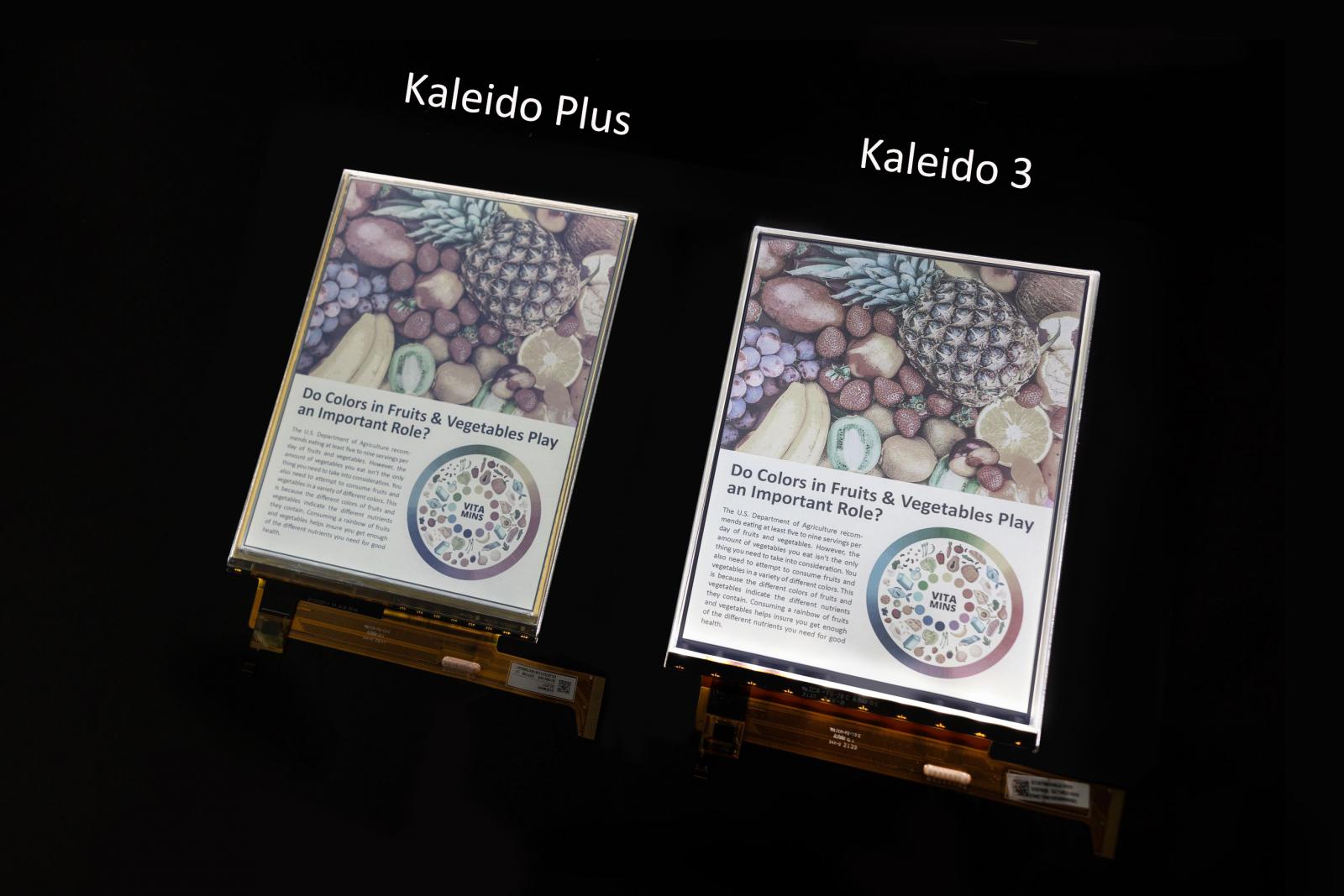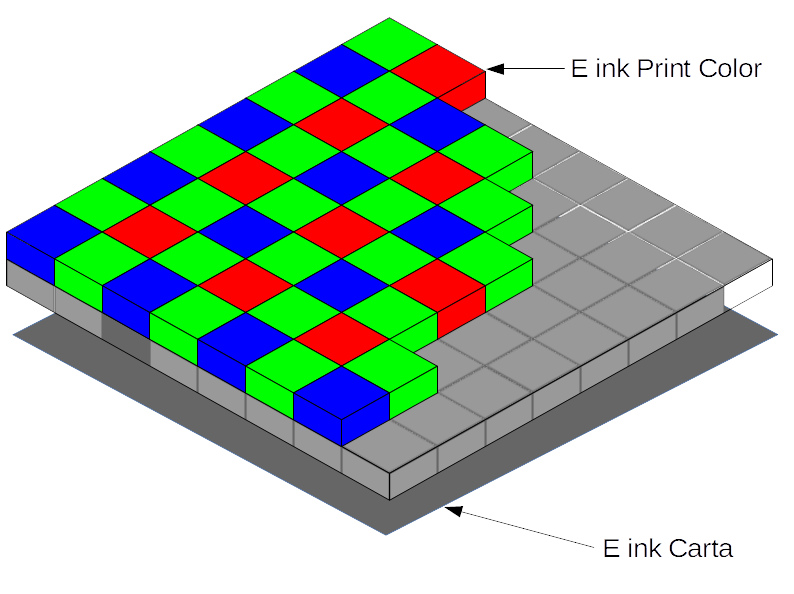
Kaleido technology has been around for a few years now. While it still holds real promise for color e-readers, we've yet to get a real glimpse of this future. Will the Kaleido 3 color screens finally revolutionize the e-reader market?
One thing seems certain: the future of the e-reader will involve color.
Indeed, it's the last great technological wall separating digital reading from a reading experience superior to paper.
Without true color as vivid as a paper print, it's currently impossible to consume comics, photography books and magazines without the need for a color tablet and its rapidly eye-weary screen.
E Ink was the first company to offer e-ink screens for e-readers. It has therefore been working for years on adding color to its screens.
One of the major advances was the arrival of Kaleido technology. This made it possible to add color rapidly, while retaining the advantages of electronic ink (energy savings, reading comfort, reading without lighting).
How does the Kaleido screen work?
E-readers are able to display colors with a Kaleido screen, which is the name of the screen sold to device manufacturers by E Ink.
First of all, the technical basis of the Kaleido (or Print Color) device is indeed a Carta-generation e-ink black and white screen. This is the screen used in today's black and white e-readers.
The innovation comes from the addition of a Color Filter Array (FCA), which adds color.
This FCA is well known to screen designers, and its French name is "Matrice de filtres colorés". It's a mosaic of colors (red, green and blue) on top of the black-and-white screen.
Each point (or pixel) on the screen can then take on the color white, black, blue, green or red.

To obtain different shades of color, the screen then combines different colors to obtain the desired hue from among 4096 possibilities.
This technique makes it possible to add color to an existing e-ink screen. You'll learn more about electronic ink (e-ink) screen technology in this article.
The Kaleido screen has since been updated with Kaleido Plus technology, then Kaleido 3 to improve color display.
The need for a Kaleido 3 screen
Kaleido technology is not without its drawbacks. The main one is that color reproduction is paler than on paper, LCD or LED screens.
For this reason, new versions of these screens have been appearing over the past 4 years.
After a Kaleido 2 (or Kaleido Plus) version that was ultimately rather confidential (there's the Pocketbook Inkpad Color, which seems to be equipped with such a screen), the E Ink Kaleido 3 technology is now available.
Yes, this screen is now available for e-reader brands who want to embed it in a machine.
Here's what's new in Kaleido 3:
- 30% more vivid colors than the Kaleido 2/Plus version
- E Ink ComfortGaze lighting technology, which promises a significant reduction in blue light emission
- A diagonal available in 7.8", 10.3" and 13.3" sizes

This all sounds very pleasing, but I do have a few technical concerns, and there are always some annoying limitations.
Firstly, I haven't found any information about 6- to 7-inch screens using Kaleido 3. Does this mean that this technology will be reserved for larger screens and, therefore, more expensive e-readers?
If so, that's a real shame, because I think a 6-inch Pocketbook Color with an up-to-date screen and a price still under $200 would be a really good e-reader.
On the other hand, one of the limitations of these color screens is the lower resolution for color display. It seems that this is still the case with Kaleido 3, and we're still limited to 4096 colors.
This aspect of the technology can be annoying when displaying photographs and pictures - for example.
E-readers using this screen are mainly designed by Asian brands, and are not widely distributed worldwide.
It is worth noting, however, that the recently released Pocketbook InkPad Color 2 still uses an E Ink Kaleido™ Plus screen, which seems to indicate that the price of Kaleido 3 screens is too high, or that the quantities manufactured are too low, for these screens to be integrated into e-readers distributed widely around the world.
More on the E-Ink website : https://www.eink.com/brand/detail/Kaleido3






